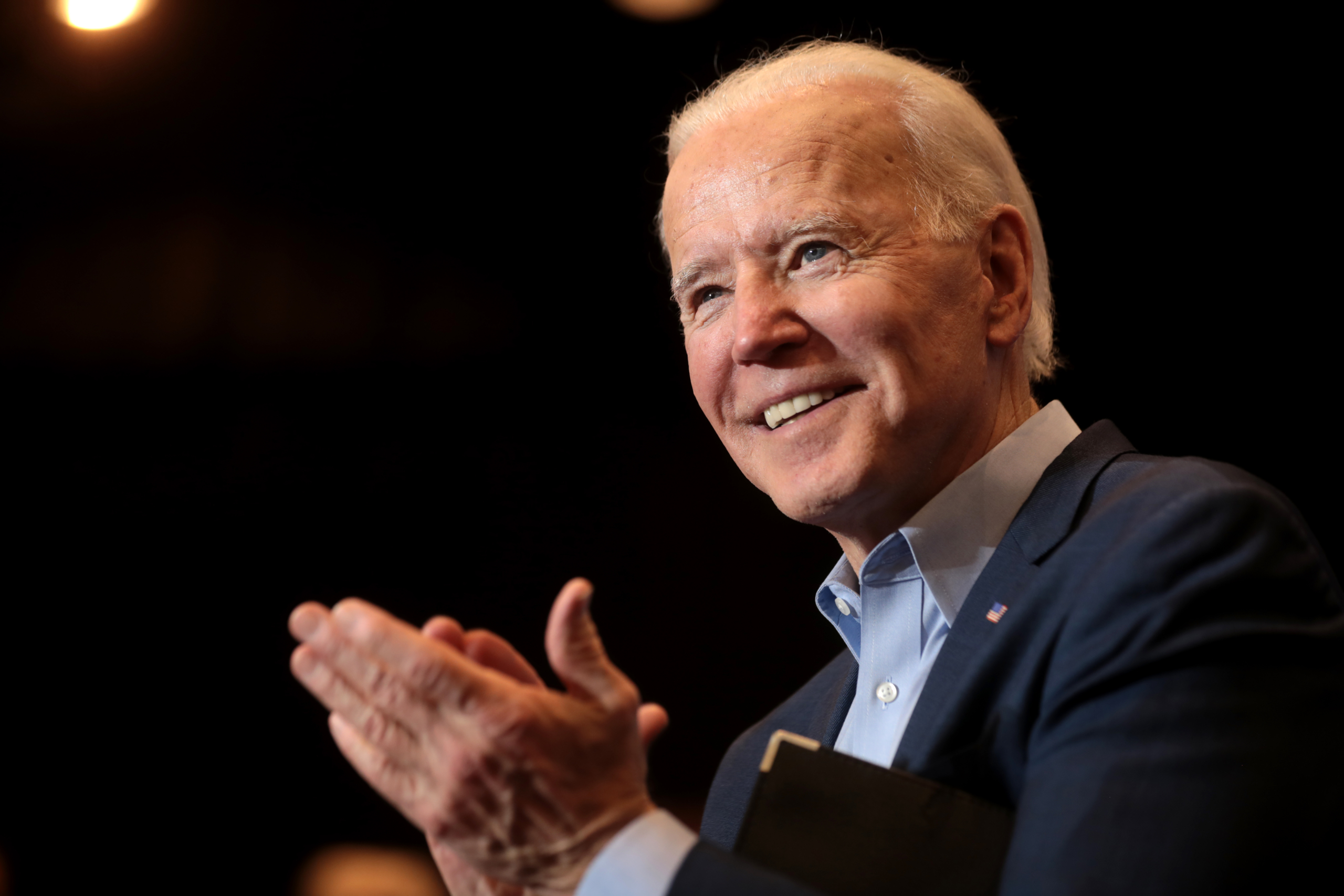Breaking down Biden’s Budget Proposal for FY 2024
On March 9, 2023, President Biden released his proposed budget for fiscal year 2024. While the proposal is not binding and unlikely to pass a divided Congress, it is a clear statement of the Biden Administration’s priorities and values. As budget talks heat up in Congress and threats to cut Medicaid arise, NHeLP appreciates the President’s commitment to protect and strengthen Medicaid, the Children’s Health Insurance Program (CHIP), and the Affordable Care Act (ACA) in his budget plan. This blog post will highlight key health care provisions in the President’s budget as discussed in the HHS Budget in Brief, particularly within Medicaid and CHIP, the ACA, the HHS Office for Civil Rights (OCR), and reproductive and sexual health care.
Medicaid and CHIP
The President’s budget shores up Medicaid and CHIP by expanding coverage and access to care, strengthening program sustainability, and improving quality reporting and eligibility methodologies.
Expanding coverage and access to care. To address the coverage gap in non-expansion states, the budget proposes “Medicaid-like coverage” to individuals with low income in states that have not expanded Medicaid under the ACA. Similar to bills and provisions we have seen considered in Congress, this proposal is paired with financial incentives to ensure that current expansion states maintain their existing Medicaid expansions. The budget also promotes maternal and infant health outcomes by requiring states to provide twelve months of postpartum coverage in Medicaid and CHIP (states currently have an option to do this). The budget converts existing and new Certified Community Behavioral Health Clinic demonstrations into a permanent Medicaid state plan option as well.
Moreover, the budget features significant investments in necessary health care services. Estimated to save $10.2 billion over ten years, the budget eliminates cost-sharing and utilization barriers to pre-exposure prophylaxis (PrEP), an effective HIV preventive medicine, for Medicaid and CHIP beneficiaries. The budget also invests $150 billion over ten years in Medicaid home and community-based services (HCBS), illustrating the President’s commitment to supporting care for older adults and people with disabilities within their homes and communities. To reduce administrative burdens and save $2.9 billion over ten years, the budget expands the Vaccines for Children program to states with separate CHIP programs and removes copayments for all vaccines administered to CHIP children.
Strengthening program sustainability. The budget seeks to establish a program under which the Centers for Medicare & Medicaid Services (CMS) and state Medicaid programs partner with a private sector contractor to negotiate Medicaid supplemental rebates for high-cost drugs, saving $5.3 billion over ten years. The budget also allows states to extend Medicaid drug rebates to states with separate CHIP programs to align drug rebate policies with states that have Medicaid and Medicaid expansion CHIP programs, saving $2.3 billion over ten years. Additionally, the budget modifies the Medicaid Drug Rebate Program in the territories, providing them with the option to participate in the program (instead of a waiver to opt-out of the program) and excluding territories’ prescription drug sales from certain drug pricing calculations.
Furthermore, the budget enhances Medicaid managed care enforcement by providing CMS with the ability to condition federal matching funds in managed care plans’ contract capitation amounts on a service-by-service basis when a plan is out of compliance. The budget also sets a minimum Medicaid and CHIP managed care plan Medical Loss Ratio (MLR) at eighty-five percent and instructs states to collect refunds if plans fail to meet the minimum MLR. Together, these managed care enforcement provisions are estimated to save $23.2 billion over ten years.
Lastly, the budget requests $353 million for CMS administrative activities to support Medicaid and CHIP operations, including investment in the Federal Data Services Hub to aid states in conducting eligibility determinations and renewals during the continuous coverage unwinding.
Improving quality reporting and eligibility methodologies. Aligning quality reporting requirements with those of the Child Health and Behavioral Health Core Sets, the budget requires annual reporting on the Adult Core Set and an HCBS Core Set within four years. To support this requirement, the budget respectively funds the Adult Quality Measurement and Improvement Program and HCBS Measurement Program with $15 million and $10 million annually, totaling $278 million in administrative costs over ten years. Additionally, the budget aligns the eligibility methodologies for Medicare Savings Programs (MSP) and the Part D Low-Income Subsidy to reduce administrative barriers to enrollment and save an estimated $5.8 billion over ten years. The budget also establishes a twelve-month renewal period for MSP, which aligns the renewal process for Qualified Medicare beneficiaries with Modified Adjusted Gross Income (MAGI)-based beneficiaries.
Affordable Care Act (ACA) and Private Insurance
To strengthen the ACA, the budget permanently extends the enhanced premium tax credits that were extended through 2025 in the Inflation Reduction Act (IRA). This proposal would eliminate the required contribution for individuals and families making between 100 percent and 150 percent of the federal poverty level (FPL), limit the maximum income contributions towards benchmark plans to 8.5 percent of income, and remove the 400 percent of FPL cap on premium tax credit eligibility. Additional budget provisions relevant to private insurance include: extending surprise billing protections to ground ambulance services, requiring plans to cover three behavioral health visits and three primary care visits per year without cost-sharing, extending IRA drug rebates and the $35 cap on cost-sharing for insulin to the commercial market, and providing mandatory funding for state enforcement of mental health parity requirements and the No Surprises Act Implementation Fund.
HHS Office for Civil Rights
The budget requests $78 million for the Office for Civil Rights (OCR) to bolster its role as HHS’s primary enforcement and regulatory agency for civil rights and health information privacy and security. This allows for a robust investment in enforcement staff to address the increase in civil rights case complaints and resulting complaint inventory backlog. The budget also seeks to increase the amount of civil money penalties that can be imposed for Health Insurance Portability and Accountability Act (HIPAA) non-compliance and authorizes OCR to work with the Department of Justice to seek injunctive relief in federal court for HIPAA violations. Moreover, the budget includes funding for a dedicated Behavioral Health Team, the implementation of the Health Information Technology for Economic and Clinical Health Act, and civil enforcement of Part 2 confidentiality protections for substance use disorder patient records.
Reproductive and Sexual Health Care
The budget invests $1.9 billion in the Health Resources and Services Administration (HRSA)’s Maternal and Child Health programs, which serve nearly 60 million people; $512 million to the Title X family planning program, the only federal grant program for comprehensive family planning and preventive health services; and $44 million for the Office on Women’s Health (OWH)’s prevention and treatment initiatives. Notably, while the budget does not include the Hyde Amendment and Dornan Amendment (DC Medicaid abortion coverage ban), it does include the Weldon Amendment and abortion coverage bans for the Federal Employees Health Benefits Program, Peace Corps volunteers, and people incarcerated in federal prisons (see All* Above All’s statement and Kaiser Family Foundation’s resource for more information). The budget also provides $2.7 billion for the Ryan White HIV/AIDS Program, including $290 million for the Ending the HIV Epidemic in the United States Initiative, and proposes a new mandatory PrEP Delivery Program to provide PrEP and related services at no cost to uninsured and underinsured individuals.
Additional Health Care Provisions
Other health care provisions in the President’s proposed budget include:
- Investing $7.1 billion in community health centers that provide necessary services to low-income and underserved populations across the country.
- Dedicating $836 million to the 9-8-8 program to support specialized services for LGBTQI+ youth and Spanish speakers, invest in local crisis centers, and develop a national media campaign.
- Expanding health care workforce capacity by providing $2.7 billion to HRSA workforce programs.
- Investing $20 billion in mandatory funding over five years and complementary discretionary funding to bolster preparedness for future public health threats.
- Providing $5.5 billion for unaccompanied children and $1.7 billion for refugees and other new arrivals eligible for benefits.
- Establishing a Vaccines for Adults Program to provide uninsured adults access to recommended vaccines.
- Proposing $8.1 billion in discretionary funding for Indian Health Service (IHS) accounts and full mandatory funding for all IHS accounts beginning in FY 2025.
- Proposing new tax revenue sources and drug reform savings to extend the solvency of the Medicare Hospital Insurance Trust Fund by at least 25 years without cutting benefits.
- Establishing a new five-year National Hepatitis C Elimination Program.
- Investing $2.5 billion in the Advanced Research Projects Agency for Health and $716 million in the National Cancer Institute to drive breakthrough research in cancer and other diseases such as diabetes and dementia.
Conclusion
We now await action on the President’s budget in Congress and expect to see budget proposals released in the House in late April or early May. In contrast to the President’s budget, the House budget is expected to include proposals to cut Medicaid including changing its open-ended funding into a per capita cap or block grant, imposing work requirements, or proposing other significant changes to drastically restructure the program. For more information on the importance of strengthening Medicaid and the harmful impacts proposals being threatened by detractors, see NHeLP’s “Protect Medicaid Funding” series and “Protect Medicaid 2023” publications (coming soon).






